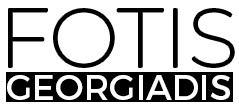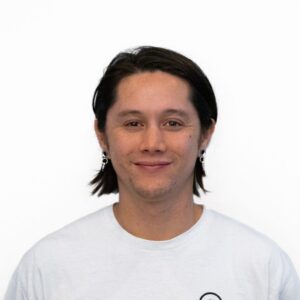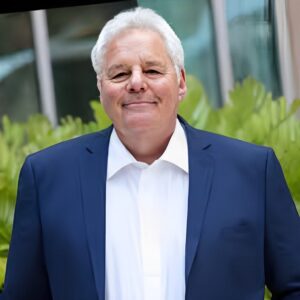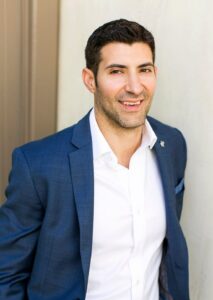An Interview With Fotis Georgiadis
Rather than five individual words, I will share the five words that my grandma said to me often, “Don’t just Dream, Do it.” My Grandma would tell me, “Jimmy, the road is always long, bumpy and often you will not see a curve coming. Some will stay home rather than travel that road and just dream. Don’t just dream, Jimmy, do it. Do not be afraid to travel down the road and see what it has to teach you.”
As a part of our series about business leaders who are shaking things up in their industry, I had the pleasure of interviewing Jim Conyers.
Jim Conyers has spent the past two decades bringing critical care solutions and technology to the market. As a recognized specialist in the healthcare information technology field, he continues to develop clinically relevant solutions that assist healthcare systems and enhance the overall quality of life for clinicians and patients. Conyers earned a Doctorate in Applied Management and Decision Sciences from Walden University.
Thank you so much for doing this with us! Before we dig in, our readers would like to get to know you a bit more. Can you tell us a bit about your “backstory”? What led you to this particular career path?
My journey getting where I am today was not just straight and narrow. I grew up spending most of my time split between North Carolina and Montana, working on the farm in North Carolina or the ranch in Montana. Even though both jobs were physically and mentally exhausting, both were equally rewarding. My upbringing not only taught me what hard work really means, but more importantly taught me how to believe in myself and the endless possibilities that life has to offer. I learned at a young age that hard work can lead to great opportunities by giving you the courage to believe in what you are capable of achieving.
Northeast Montana can get extremely cold temperatures, which was the biggest challenge. I enjoyed the various chores associated with farming and ranching, but I knew without a doubt, I did not enjoy the extreme cold. It was in middle school, during a job outlook class when I was first learned of industry forecasts, job growth predictions, potential earnings, career demand and more, and that was when I began to think about my future. When I was in 8th grade, computer science and information systems were taking off fast as growing industries. To be honest, that sounded cool to me and I made my decision to work towards a career in technology simply for that reason. As I approached the completion of high school, I was determined to be the first member of my family to attend college. I buckled down, worked hard, and focused on my goal to make this happen — and I did it, I made it to college! I went to school for computer science, then information systems, then business. While in college, I studied a lot of work related to IT certification programs that were starting to ramp up in the industry. I wrote test questions, trained the trainers and performed student training programs.
After college, I worked on a project to design and build high speed bandwidth solutions for delivery to residential customers and then was presented with an opportunity to move to Colorado to work for a large healthcare organization in their information technology department. My core focus was on Microsoft systems and solutions, networking and large scale IT architecture design. During this time, digital picture archiving and communication systems (PACS) were being introduced to the healthcare market and I wanted to be part of the transformation from analog to digital healthcare delivery. It was then I was given the opportunity to join a large multinational corporation that delivers medical imaging and software solutions to healthcare organizations like the one in Colorado. This amazing opportunity opened doors that allowed me to experience so many different aspects of healthcare and health system operations. I started off technical, but over the years gained a great deal of clinical and operational knowledge.
It was at this point that I realized that we were at the beginning of a significant evolution in medicine and that the possibilities were vast. Over the last 20 plus years this digital transformation has grown so rapidly and I started to realize that the problems we were seeking to solve were too general and specific. We were creating these point solutions designed to solve single individual challenges but we were overlooking the main problem of data that continues to grow today. When I came to terms with this, I got to work and set my focus on solving real high value challenges and was determined to once again open the doors to possibilities in the advancement of medicine like nothing else we’ve seen previously. It was that decision seven years ago that has led me to this exact moment and I have never been more excited in my entire career than I am now.
Can you tell our readers what it is about the work you’re doing that’s disruptive?
When we pause for a moment and really think about the complexity of the challenges facing healthcare, we can start to connect the dots and see that medicine is an intricate ecosystem that is affected by a multitude of variables and outside factors. If we peel back the tangled layers and focus strictly on the difficulties related to the entire continuum of healthcare delivery, we can uncover the root cause of so many of those challenges that affect accessibility, data and extraction, security, capacity, and operationalizing innovative solutions.
Healthcare organizations utilize complex ecosystems consisting of individual point solutions designed to address specific elements within clinical workflows. Each point solution is provided to address the specific problems and needs of every member of the healthcare delivery team. So why is it that we continue to deliver solutions focused on addressing specific challenges? The answer is because we are not addressing the root cause. We are too focused on the downstream clinical workflows instead of addressing the upstream problems that affect the downstream clinical systems. This leads to bandaged systems that attempt to create an ecosystem of interoperability and accessibility.
We are disrupting the current paradigm with the work we are doing by providing advanced technologies and AI to alleviate healthcare challenges at the core. We are resolving the problems that positively affect downstream workflows and unlock real potential in medicine/medical innovation and advancement. Unlocking the treasure chest of clinical data generated throughout healthcare organizations is the key to improving clinical workflows and operations. It is not just about interoperability to and from the electronic medical records, but across all critical care systems. It is about unlocking the valuable data that exists in all of these siloed systems, in addition to the valuable data that exists in the diagnostic images themselves.
Interoperability and standardization of all clinical content is our mission. We enable institutions to realize real-world evidence that is constructed of not only EMR based data, but decades of archived diagnostic imaging data. We do this by delivering a new expandable AI technology that enhances clinical AI models’ ability to derive insights in real-time while correctly linking that evidence across all systems within the healthcare environment. Our mission is to bolster the healthcare industry in the delivery of a comprehensive real-world evidence-based solution that can be shared among all health systems in an intelligent, meaningful and secure manner. At the end of the day it is about saving lives through improvement in patient outcomes, reduction in clinician burnout and innovative drug and medical device discovery.
Can you share a story about the funniest mistake you made when you were first starting? Can you tell us what lesson you learned from that?
Years ago I was in a crucial meeting with a hefty healthcare system and it was down to us or the other vendor. In the middle of the meeting and heated discussion about how all healthcare information technology vendors’ solutions are horrible; “they do not work like they promise, so forth and so on”, I started giggling out of nowhere. Everyone in the room stopped arguing to look at me. Perplexed, likely frustrated, they wanted to know what was so funny. I first apologized, but then responded that I finally understood. I continued to explain, you are frustrated and concerned about false promises and inadequate solutions. They are not living up to the expectations you hold to ensure high quality delivery of patient care. Rightfully so and you deserve better, your patients deserve better.
I proceeded to provide a solution with a common understanding and collaborative path forward. What makes the story funny to me is what popped into my head when I started giggling. When I was just starting in this career, I was at the bottom of the organizational structure and an executive in our company said to me, “You know Conyers we suck, we are just as bad as everyone else.” At that time I had no idea what he meant. Five years later in that meeting, I finally understood. All companies have their challenges and issues. They all have good intentions and want to make a difference. To believe that your company is perfect is denial. Yes, we are not perfect, but we are better than the alternative and we will always work as hard as we can to continuously improve in the areas we are not.
We all need a little help along the journey. Who have been some of your mentors? Can you share a story about how they made an impact?
Starting off on this journey I was a young passionate individual starving to take on the world, not really knowing what that looked, I just knew that I wanted it. The one thing I knew to my core was I needed to make a difference and that I wanted to work in healthcare in some capacity. If I could prevent one tear from falling that could have been avoided with better solutions, innovation or data I knew that meant I helped make a difference. What I did not know was how complex healthcare delivery actually was and the incredible magnitude of the number of solutions that were used across the continuum of care to address a very specific care delivery model. It seemed to be an impossible mission to get to true interoperability, communication, accessibility and to break down the silos of all these point solutions.
Along the way I was blessed with the opportunity to be mentored by one of the most passionate, dedicated and intelligent people I had ever met. Jim Morgan was an executive leader in the company I worked for. Even though I was only a couple years into my career he always took the time to engage with me and share his wealth of knowledge. Mr. Morgan taught me that no matter how daunting the task we will always have to keep moving forward.
I remember when it all clicked, we were in Miami at a customer visit discussing the challenges they were facing with getting various critical care solutions to communicate, exchange and present to the clinicians. No matter how I looked at it I seemed impossible. How do you get a dozen different vendors to come together and use the same communication protocol, to produce a standardized data output and present the relevant information at the right time in the clinical workflow? This is what we had been fighting for years to accomplish and in all honesty it hadn’t truly progressed. That evening feeling defeated, Mr. Morgan said to me, “It sucks, it’s unfortunate but if we wait for everyone to start speaking the same language, with a universal standardized output, and with a common data model, we will be waiting longer than our lifetime. You cannot control that, what you can control is what you do to make it a non-issue. Remember the answer is always in the clinical workflow.”
The impact this had on me was significant. I realized that rather than waiting on the environment to change, I had the control to change the environment. I spent the next 10 years studying clinical workflows throughout the hospital with healthcare systems around the world. Doing so I realized we do not have to wait for everyone to speak that same communication language, standardize output in a common data model, we can use advancement in technology coupled with advanced AI to solve the issues from the inside out.
In today’s parlance, being disruptive is usually a positive adjective. But is disrupting always good? When do we say the converse, that a system or structure has ‘withstood the test of time’? Can you articulate to our readers when disrupting an industry is positive, and when disrupting an industry is ‘not so positive’? Can you share some examples of what you mean?
There are times when disrupting is good and there are times otherwise. It is my position that disrupting is good when it can be achieved without turning everything upside down. When introducing a new disruptive technology or solution, it shouldn’t negatively impact the environment around it or negate the value. When we bring to market a new disruptive technology, we must be considerate of its impact on other clinical workflows, critical care systems, and others downstream. When a new disruptive technology is introduced it should enhance everything around it, seamlessly and with limited effort and impact.
Early in the digital transformation within healthcare when Radiology PACs were taking hold in the market, one of the benefits that was being promoted was how it would help to break down the silos that existed within a health system. It would reduce the number of proprietary technologies, reduce the number of solution specific requirements such as: storage systems, backup and recovery, management, monitoring and software and hardware variations being supported by the health system’s IT department that was required by the vendor for the solution. It would allow for clinical data to start to transition to a single enterprise health system managed IT infrastructure, storage, security and change management.
Then a decade later Clinical AI started to take off in the market. The core delivery model of these AI solutions was cloud-based. This meant that all the consolidation efforts over the past decade and breaking down silos would take steps backward. First, there was not one AI vendor that had all the needed clinical AI models to treat a patient, meaning that the health system would need multiple vendors, all of which had their own cloud instances on different cloud platforms and all clinical data needed to traverse the internal secure network of the health system to these siloed individual cloud instances. In addition, none of these AI vendors’ models or cloud instances integrated or worked with each other. This created a situation where silos of solutions increased where data was being created and the management of the health system became even more complex. Clinical AI is disruptive technology that has the potential to positively impact healthcare, as the PACs technology did, but only if it is designed, developed and deployed with intelligence and understanding.
Can you share five of the best words of advice you’ve gotten along your journey? Please give a story or example for each.
Rather than five individual words, I will share the five words that my grandma said to me often, “Don’t just Dream, Do it.” My Grandma would tell me, “Jimmy, the road is always long, bumpy and often you will not see a curve coming. Some will stay home rather than travel that road and just dream. Don’t just dream, Jimmy, do it. Do not be afraid to travel down the road and see what it has to teach you.”
We are sure you aren’t done. How are you going to shake things up next?
We have expanded on our unique flagship Clinical AI Model. Our Curie Standardize is a comprehensive AI Model that unlocks the door to many new cutting-edge industry revolutionizing solutions. Over the next 12 months we will be introducing the healthcare industry to first-of-kind solutions that solve decades old high value challenges that every health system in the world faces. We have developed a skeleton key with endless possibilities. The market will see new solutions designed to support and drive better drug discovery, device development, clinical workflow optimization, cross-specialty support, coding, and billing, auto protocol, a new peer-review technology and the industry’s first, real-world clinical recommendation solution for radiology, to name a few.
Do you have a book, podcast, or talk that’s had a deep impact on your thinking? Can you share a story with us? Can you explain why it was so resonant with you?
A book that comes to mind that has impacted my thinking is by John Doerr, “Measure What Matters”. Doerr introduced me to the concept of Objectives and Key Results. Possibly more importantly he influenced me to think outside the box on looking at how Healthcare IT (HCIT) companies operate, as well as how we develop applications. Rather than defining our objectives for the year and then setting goals to meet those objectives by the end of the year, we identify your annual business objectives, then break them down by quarter and stay focused on our quarterly measurable results. He also helped me adjust my mindset on how HCITs operate and how they are structured. This led to defining a new approach to how our company operates and how we are structured. This book opened my eyes to how we develop software. It provided me with a different way of thinking. This led me to create a different development model and technique. This has allowed us to evolve faster with high quality outputs, delivering more innovation in less time and meeting customer demands and needs quickly.
Can you please give us your favorite “Life Lesson Quote”? Can you share how that was relevant to you in your life?
I believe it is my original quote as I started saying it many years ago, “You cannot get an Answer if you do not ask a Question.” Seemingly simple enough, but also amazingly enough, we do not always ask questions when we have them. I feel that sometimes we have questions we want to ask but we just don’t for whatever reason, but hope that we ultimately get an answer. We should not be afraid to ask questions, nor fear or be upset with the answer we get, at least we got an answer. It may not be what I wanted to hear but at least now I know.
You are a person of great influence. If you could inspire a movement that would bring the most amount of good to the most amount of people, what would that be? You never know what your idea can trigger. 🙂
I want to start a movement to make clinical real-world evidence accessible. All the data we need to produce better drugs faster and safer exists locked away within the archives of healthcare organizations. The data needed to drive down clinical error, reduce risk, improve treatment planning and post-acute care exists but remains untapped. The data needed to have a rapid and relevant response to outbreaks, pandemics, etc. exists today but is too disorganized to access. Non-standardized data makes the search, analytics and insights difficult, untimely, and expensive. I am on a mission to change that and create a real world data movement.
How can our readers follow you online?
LinkedIn: www.linkedin.com/in/james-conyers-4052881b
https://www.linkedin.com/company/enlitic
Website: https://www.enlitic.com/
This was very inspiring. Thank you so much for joining us!
Meet The Disruptors: Jim Conyers of Enlitic On The Five Things You Need To Shake Up Your Industry was originally published in Authority Magazine on Medium, where people are continuing the conversation by highlighting and responding to this story.



